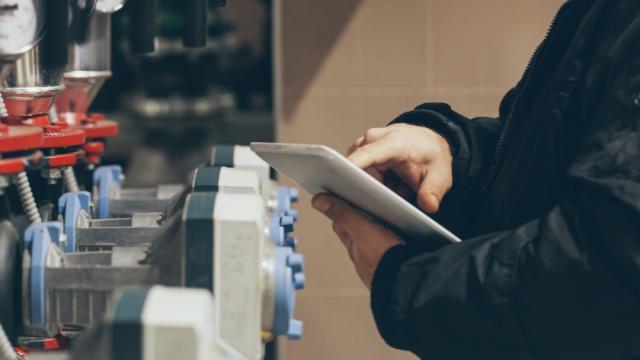Water is not only a precious resource, but it can be a significant cost factor in your operating budget. Do you know how much water is used in your facility and where? A facility water audit is a great way to examine your water-using systems, measure water use and identify opportunities to improve water efficiency. While every facility is different, here are some best practices for a successful water audit.
Inventory Your Water Use
It's important to understand how and where water is used in your facility. Walk through your facility and identify every point at which water is used. Document the items (toilets, faucets, irrigation sprinklers and so on), their location and flow rate. Remember to include mechanical equipment, such as boilers and cooling towers, which often use a significant amount of water.
Measure Water Usage
Many facilities have only one master water meter. Readings from this indicate overall water usage, but it won't tell you where your facility is using water or help identify opportunities to improve water efficiency. That's where submetering can help.
Install submeters in individual zones or floors of your facility. Large water users, such as cooling towers, should be submetered individually. Read each meter regularly. If readings for particular meters seem high or on the rise, that would signal further investigation for leaks, equipment malfunction or inefficient usage.
Meter reading will provide a baseline water usage for your facility from which you can benchmark against similar facilities. Regular monitoring will help you track usage over time to identify areas for improvement.
Implement Preventive Water Maintenance
If your water maintenance practices are reactive in nature — responding only when a problem is reported — you may be wasting a significant amount of water and money each year. Preventive maintenance is a proven strategy for improving system performance and saving money, including for water-using systems.
Preventive maintenance practices for water equipment that should be performed regularly include:
- Check water submeters that may be installed on major water-using equipment, systems, or processes.
- Test water pressure on each floor of the facility to ensure it is within optimal range for fixture and equipment performance.
- Check and adjust automatic sensor and metering faucets to ensure accurate timing and delivery of water per cycle.
- Test and calibrate all automatic- and sensor-flushing devices to prevent double/phantom flushes.
- Adjust irrigation schedules to be appropriate for climate and soil conditions and the season.
- Inspect boilers and cooling towers to ensure that makeup water systems are operating properly.
For more information, see the Maintenance Water Waste Checklist from the U.S. Environmental Protection Agency. Also from EPA is a very helpful tool for tracking water and energy usage is the free software package Energy Star® Portfolio Manager.
Develop a Water Efficiency Plan
Long-term water savings requires planning. Start by setting water use reduction goals that are achievable and measurable. To achieve your water-saving goals, appoint an interdepartmental water management team. The team will take the lead in evaluating facility water use, implementing water-saving measures, tracking progress and identifying new savings opportunities.
Water management planning typically focuses on water usage in four areas:
- Reducing water losses, such as leaks
- Increasing the water efficiency of equipment and processes
- Encouraging water-saving behavior among employees and building occupants
- Finding ways to recover and reuse water onsite
Reducing water use can benefit your facility in a number of ways — lower utility bills, reduced chemical treatment costs and a healthier and more productive work environment. Also, the EPA's free software package, 'Energy Star® Portfolio Manager' is a very helpful tool for tracking water and energy usage.
June 2023 Connections Newsletter
From industry trends and best practices to sustainability initiatives, our monthly Connections Newsletter provides valuable insights, updates, and resources to support our large business customers.
Full Newsletter